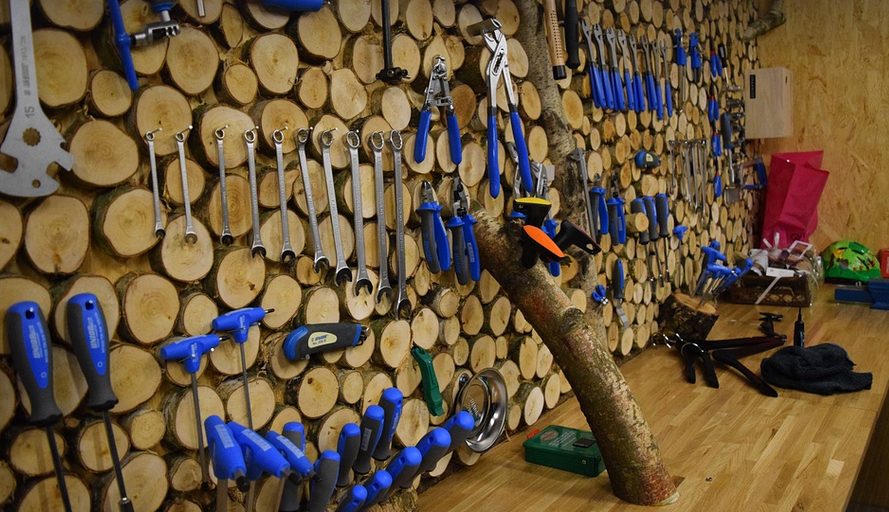Making Your Floors Shine: A Guide to Choosing the Perfect Underlayment
Thinking about transforming your concrete floor into a space that’s both beautiful and functional? You’ve come to the right place. The right underlayment is key to achieving a smooth, stable, and long-lasting floor surface. It’s like laying down the foundation for a masterpiece—a good foundation will allow you to work on top of it!
Concrete floors can seem plain and utilitarian, but with the right underlayment, you can unlock their potential. This guide walks you through the world of underlayments, helping you pinpoint the perfect option for your specific needs and project.
Deciphering the Concrete Floor Underneath: What You Need to Know
Before diving into different underlayment types, it’s important to understand what influences their choice. The first step is assessing your concrete floor:
- Levelness and Consistency: Is your floor smooth or uneven? This will influence the underlayment you choose. A level floor can handle thicker underlayments, while a more uneven one might require a more forgiving option.
- Type of Concrete: Was it poured recently or years ago? The age of your concrete will impact its moisture levels and how well it absorbs different underlayment options.
- Load Capacity: How much weight will be on the floor? If you’re planning to install heavy furniture, appliances, or equipment, you need an underlayment that can handle those loads.
Knowing these answers is crucial for choosing a suitable underlayment. Each type of underlayment excels in different areas, and the right combination will ensure your floor surface lives up to its full potential.
Underlayments: A Closer Look at the Options
Let’s dive into the key types of underlayment materials:
1. Rubber Underlayment: The Resilient Champion
Rubber underlayment is a favorite choice for many, and with good reason. Its primary advantage lies in its ability to absorb impact and provide cushioning against heavy objects. It’s also excellent at reducing noise and vibration, making it ideal for spaces where sound control is important.
Rubber underlayment comes in various forms: sheets, mats, and even rolls, offering flexibility in installation and customization. It’s a versatile choice for various applications, from residential to commercial settings.
2. Polyethylene Underlayment: A Durable Choice
Polyethylene underlayment is another popular option known for its durability and moisture resistance. This material proves particularly effective against humidity and moisture issues that might potentially affect your floor. It’s a great choice in areas with high moisture levels like basements or bathrooms.
Polyethylene underlayment also provides excellent insulation, keeping the floor warm in winter and cool in summer. This makes it ideal for climate-controlled environments where maintaining thermal stability is essential.
3. Foam Underlayment: A Soft and Supportive Option
Foam underlayment is a soft choice known for its cushioning properties. This type of underlayment provides a comfortable feel underfoot, often used in places with heavy foot traffic like homes, schools, and offices.
- Noise Absorption: Foam helps absorb noise, making it ideal for quieter environments where sound is controlled.
- Impact Cushioning: Foam provides a soft cushioning underfoot, protecting against the impact of heavy objects and reducing stress on the floor.
4. Plywood Underlayment: A Robust Choice
Plywood underlayment is a strong choice for those looking for an extra layer of stability, especially in situations where heavy appliances or furniture are expected to be placed. It’s also beneficial when you need an impact-resistant material that can withstand heavy loads.
5. Moisture Barrier Underlayment: Protecting Against the Elements
Moisture barrier underlayment is a top choice for basements and other areas where moisture is a concern. It acts as a protective layer against humidity and water damage, preventing mold growth and ensuring your floor remains safe and sound.
Choosing the Right Underlayment: A Personal Touch
With all these options available, choosing the right underlayment can feel overwhelming. But it doesn’t have to be! Take a moment to consider your needs:
- Personal Preferences: What kind of feel are you aiming for? Do you want something soft and cushioned (foam), resilient and durable (rubber), or sturdy and supportive (plywood)?
- Budget: Underlayment costs vary greatly, so set a budget before diving into options.
- Application: What will you be using the floor for? Will it be for residential use, commercial space, or both?
These factors will help narrow down your choices and lead you to the perfect underlayment that aligns with your project’s needs.
Installation: A Step-by-Step Guide
Now that you have a good grasp on underlayment types, it’s time for installation! This process can vary based on the chosen type of underlayment. Here’s a general overview:
- Preparation: Clean and prepare the concrete surface to ensure proper adhesion of the underlayment.
- Layering: Apply the underlayment according to manufacturer’s instructions, paying attention to thickness and placement.
- Finishing: Smooth out any bumps or irregularities in the underlayment for a consistent look and feel.
If you are feeling unsure about the installation process, consider consulting with a flooring professional. They will be able to guide you through the process and ensure a successful outcome for your project.
The End Result: A Polished Floor That Lasts
Choosing the right underlayment is like laying down the foundation for your floor dreams. With proper planning and execution, you can create a resilient, long-lasting surface that will delight you years to come!
